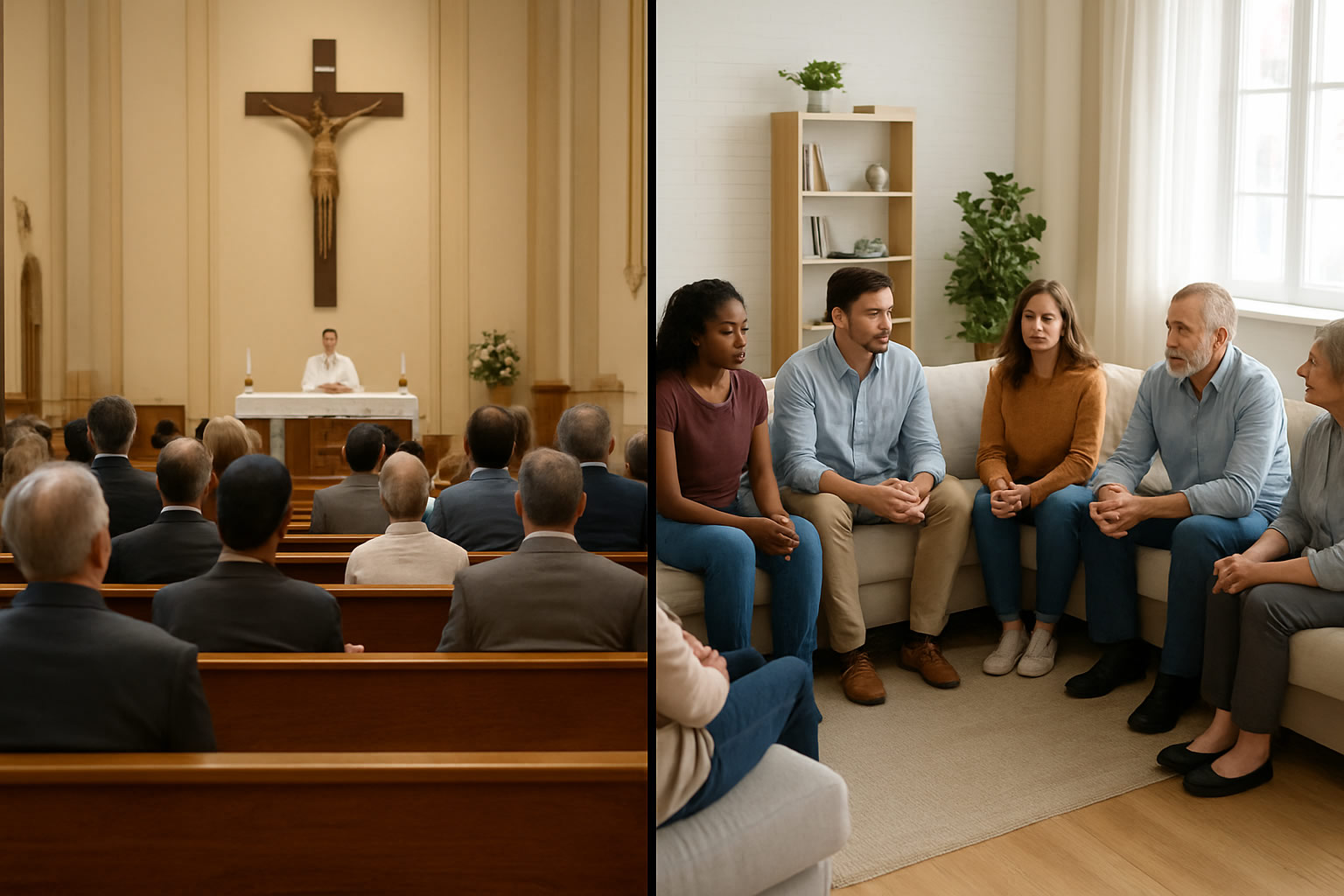“What Church do you go to?”, someone asks you. “Oh, I go to the Church down on the corner of First Street and Vine.”
This is a common part of our conversation as Christians. But there is something drastically wrong with that way of talking. What is at “First Street and Vine”? All that is there is a building. Is a building a church? For over 1700 years, buildings have been called “Churches”.
A building is NOT a church. The very act of referring to a building as a church, undermines what a church really is. The word “church” comes from the Greek work “ekklesia”. It was a familiar word in Paul’s day. It referred to a regular “assembly” of people who met together. Paul’s use of the word was to describe an actual gathering of people. The focus here is people that believe in Jesus meeting together and fellowshipping. People is the central focal point, not the building they meet in.
Recent archaeological evidence firmly proves that there were no Christian Church Buildings prior to 323 AD. The book of Acts clearly shows that the early Christians fellowshipped and met together in their homes. They occasionally all met together in public places. But it is evident that the main place of their “meeting together” (in other words - church) was in their living rooms.
Archaeologists have also discovered why they can find no evidence of Church buildings prior to 323AD. Thousands of legal documents written on papyrus from AD 100 to 400 have been found in North Africa. These are deeds, tax records, surveys and etc. Many of the documents give the name of the family that lived in each house, the occupation of those employed and their religion. Many times in these documents, they find the statement, “Christians meet together in this house.” At times the archaeologists could determine the actual location of just such a house. When they dug, they always found a house. No indication of it’s use, except the tax record or deed.
For over 300 years after the death of Christ, Christians gathered in informal settings, in their living rooms. They ate together. They shared with each other what they had learned from their walk with Jesus.
This casual, close knit fellowship of Christians was destroyed by The Emperor Constantine. How did he destroy it? By persecution? No, the organic life and vibrancy of Christians prospered under persecution. No, Constantine destroyed the simple life of the church by supposedly becoming a Christian himself. He made Christianity the religion of the empire. In 323 AD He started building large ornate buildings for Christians to meet in. He patterned the buildings after the Pagan temples that were named after the various Gods that were worshiped, i.e. “Zeus” or “Apollo” . Like the pagan temples, the Christian buildings were also named, But with more biblical names such as “Peter” or “Paul” or “Mary”.
Suddenly Christians had large cold impersonal buildings to meet in. It was a lot different from their living rooms. Virtually overnight, the whole meaning of “church” changed. No longer was it a warm, intimate time of sharing life in Jesus. It was now a cold, impersonal gathering of hundreds of people in some strange pagan type temple. Eventually, the word “church” even began to be used to describe this large building that the people met in. Oh, how far we have come!
© 2025 B Arnold Stein
Why Church Buildings?

Comments
2 responses to “Why Church Buildings?”
-
Discovering truths like this is driving the effectiveness of Christ followers around the world encouraging them to open their hearts and homes to those they meet and disciple.
Thanks for spreading the truth.-
Douglas thanks for the encouragement. Great minds think alike.
-
Leave a Reply